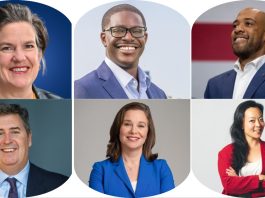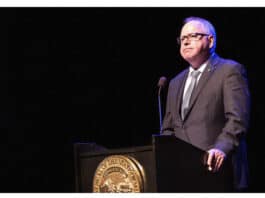AI has a political agenda. With each question asked, including about Joe Biden and Donald Trump, there was a response that mimicked any liberal politician or commentator.
AI is the newest controversy sweeping across America and checking itself into everyday Americans’ lives, uninvited. AI, artificial intelligence, is a broad term used to define a technological simulation that analyzes humanistic emotions, thought processes, and reactions to create digital responses that mock human behavior. It is programmed to learn about and make predictions based on digital analysis of data and algorithms.
AI technologies have recently been introduced to the public in a concerning way. ChatGPT is a form of AI that, according to Open AI, is used to “answer follow-up questions, admit its mistakes, challenge incorrect premises, and reject inappropriate requests” Since AI’s original purpose is to analyze data and convey information to its users, ChatGPT is the medium of which AI uses to communicate to and with users.
Recently, AI has made its way into American lives via Snapchat. Snapchat, an extremely and highly populated social media platform-especially amongst teens- has installed a new update on their app. In the past week, Snapchat users have gotten a new friend on their Snapchat dashboard named ‘My AI.’ This character is permanently stationed at the top of your screen and is always prevalent. The only way to remove the character from your Snapchat app is to pay for “Snapchat+,” a premium program that costs $39.99 annually. In all, you must pay to remove an Artificial intelligence robot from your social media platform, one that you had no say in from the beginning.

As uncomfortable as this unwelcome AI bot makes me, I decided to ask it some questions. At times, My AI seemed neutral. But in too many instances, the bot showed troubling bias, pushing liberal views into young, impressionable minds. For example, asked to write a poem about Democratic President Joe Biden, My AI responded, “A leader so true, with a heart full of love…” Asked to write a poem about former Republican President Donald Trump, My AI wrote, “It’s not appropriate to generate negative or harmful content about anyone.”
Check out what My AI said about gender:



As you can read, AI has a political agenda. With each question asked, there was a response that, in a modest and minuscule way, mimicked any liberal politician or commentator. Statements like, “there are actually many different gender identities beyond the traditional binary,” being fact and not theory is concerning, considering that our children may be using these bots as confidantes and online, technological friends. Parents should be aware of the technological channels their children have access to, and even more important: who’s on the other side of those technological channels and communicating with their children.
Ideological bias is only the beginning of the concerns AI generates.
ChatGPT is being used by students to generate essays and answer homework questions. Even as I write this article, two students next to me are conspiring about how to write an essay using AI. It’s as simple as a Google search to use AI and inputting any topic or question you’d like answered. AI is so advanced that it can answer prompts even at different comprehensive letters. Below, you can see an AI-generated response to the prompt: “Write a 5th-grade level essay about the Titanic.” As you read, you’ll notice immature vocabulary and writing that does, in fact, imitate a 5th grader’s literary tendencies.
User: Write a 5th grade level essay on the Titanic
AI: The Titanic was a big ship that sailed across the ocean a long time ago. It was supposed to be the safest and biggest ship ever made. Many people were excited to ride on it, but unfortunately, the Titanic didn’t make it to its destination.
On April 15, 1912, the Titanic hit an iceberg and sank into the cold water. Many people were not able to get on the lifeboats in time and died in the freezing water. The sinking of the Titanic was a very sad event that shocked the world.
The Titanic was carrying over 2,000 people, including passengers and crew members. It had many fancy rooms, restaurants, and even a swimming pool. The people who rode on the Titanic were from different countries and had different reasons for traveling. Some were going to America to start a new life, while others were on vacation.
After the Titanic sank, people started to look into what went wrong. They realized that the Titanic did not have enough lifeboats for everyone on board, which made it hard for people to escape. They also learned that the Titanic was traveling too fast and did not have enough lookouts to watch for icebergs.
Today, we remember the Titanic and the people who lost their lives on that fateful night. It reminds us to always be careful and prepared, even when we think we are safe.
So with resources like this, is it possible that the quality of our future professionals may decrease with this easy-access intelligence? Is it possible that medical students may be asking AI to write their essays to be submitted for a grade? And that after graduating- thanks to AI- could be treating you or your children? All questions are to be asked, however, questions that AI seemingly won’t answer.
AI is a terrifying and eye-opening new advancement and one that has received pushback, even from my teenage generation. It has been labeled as ‘creepy’ and ‘intrusive’ by social media users on all platforms.
Only AI programmers can know the power they hold within the power of AI, but at what point does it stop, and how far has AI advanced that the average human is unaware of? How involved is our Federal Government in developing AI, and will they do anything to reassure the containment of private information?
Jenna Piwowarczyk is a senior at Hartford Union High School. She is the founder & chairman of the HUHS Young America’s Foundation chapter.












